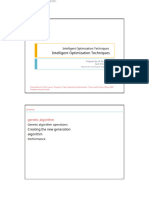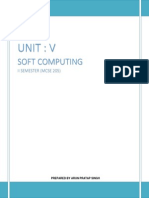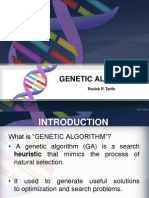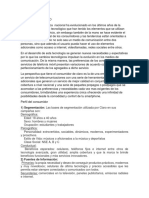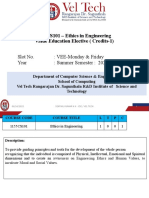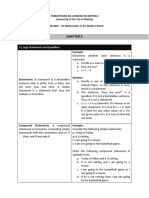0% found this document useful (0 votes)
16 views21 pages6 Genetic Algorithm
The document provides an overview of Genetic Algorithms (GAs), which are adaptive algorithms inspired by natural evolution, focusing on optimization through processes such as selection, crossover, and mutation. It details the procedures, advantages, limitations, and applications of GAs, as well as their operational mechanics and comparison with Evolutionary Programming. GAs are highlighted for their robustness and efficiency in solving complex problems across various fields.
Uploaded by
sachinch01432Copyright
© © All Rights Reserved
We take content rights seriously. If you suspect this is your content, claim it here.
Available Formats
Download as PDF, TXT or read online on Scribd
0% found this document useful (0 votes)
16 views21 pages6 Genetic Algorithm
The document provides an overview of Genetic Algorithms (GAs), which are adaptive algorithms inspired by natural evolution, focusing on optimization through processes such as selection, crossover, and mutation. It details the procedures, advantages, limitations, and applications of GAs, as well as their operational mechanics and comparison with Evolutionary Programming. GAs are highlighted for their robustness and efficiency in solving complex problems across various fields.
Uploaded by
sachinch01432Copyright
© © All Rights Reserved
We take content rights seriously. If you suspect this is your content, claim it here.
Available Formats
Download as PDF, TXT or read online on Scribd
/ 21






















